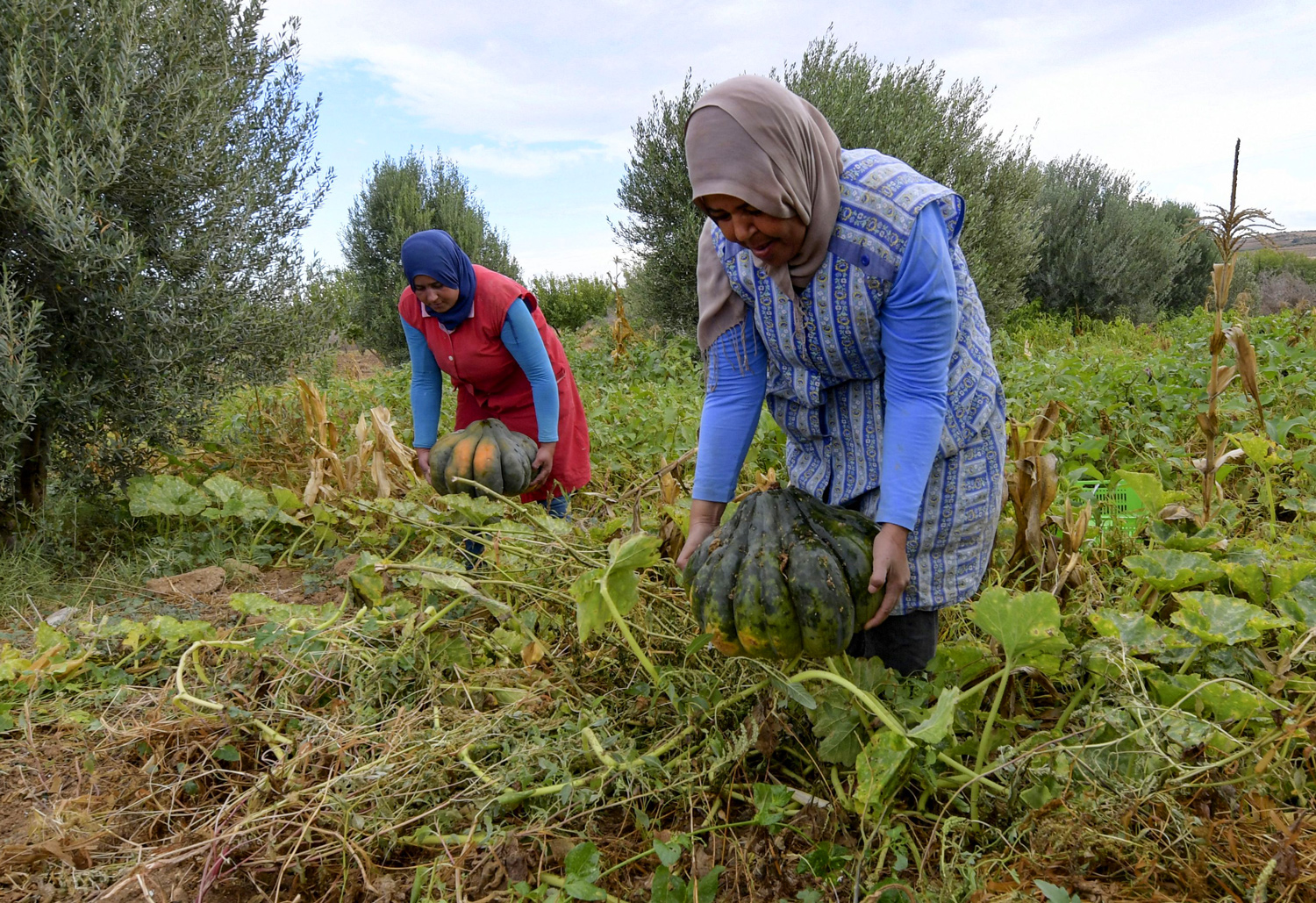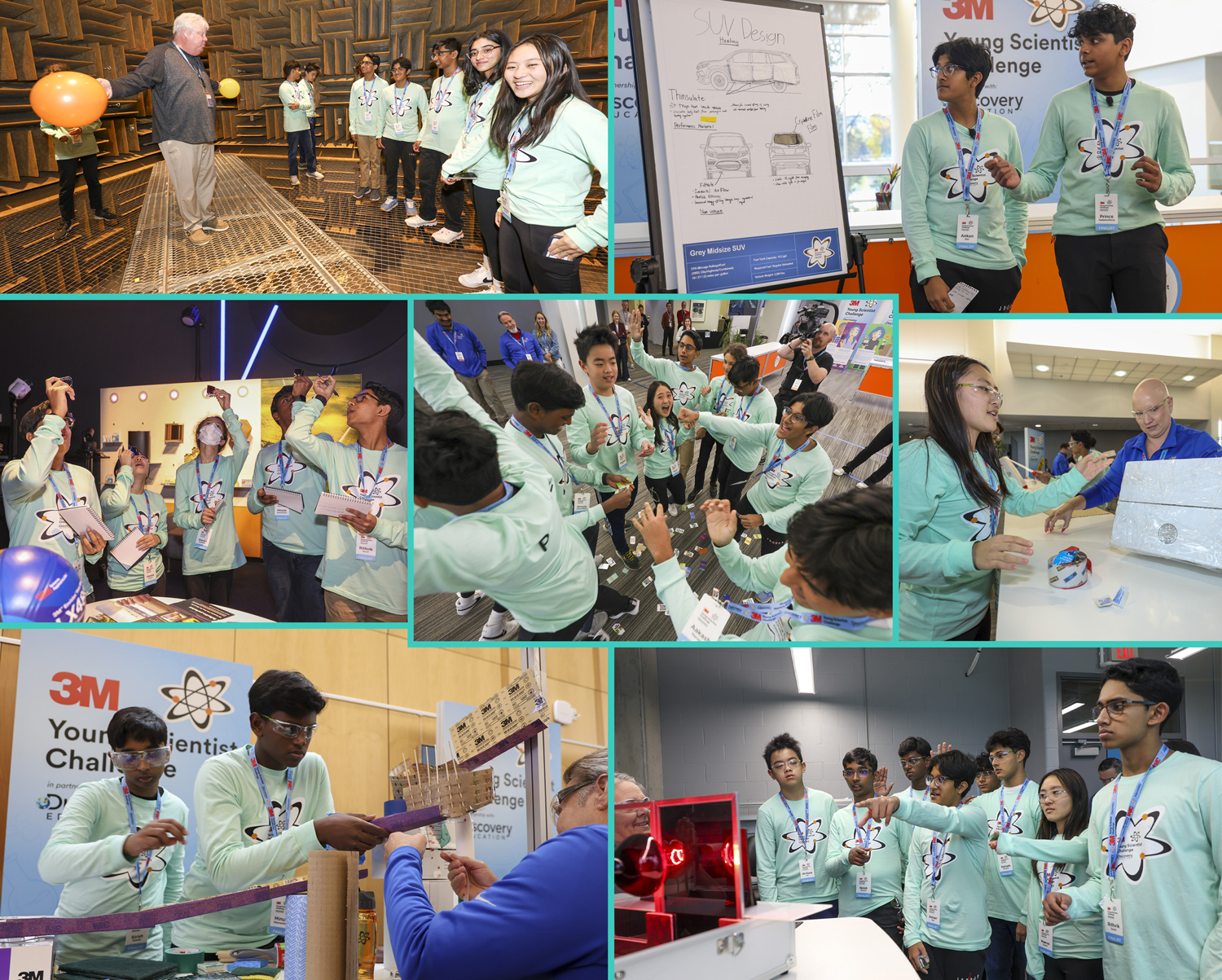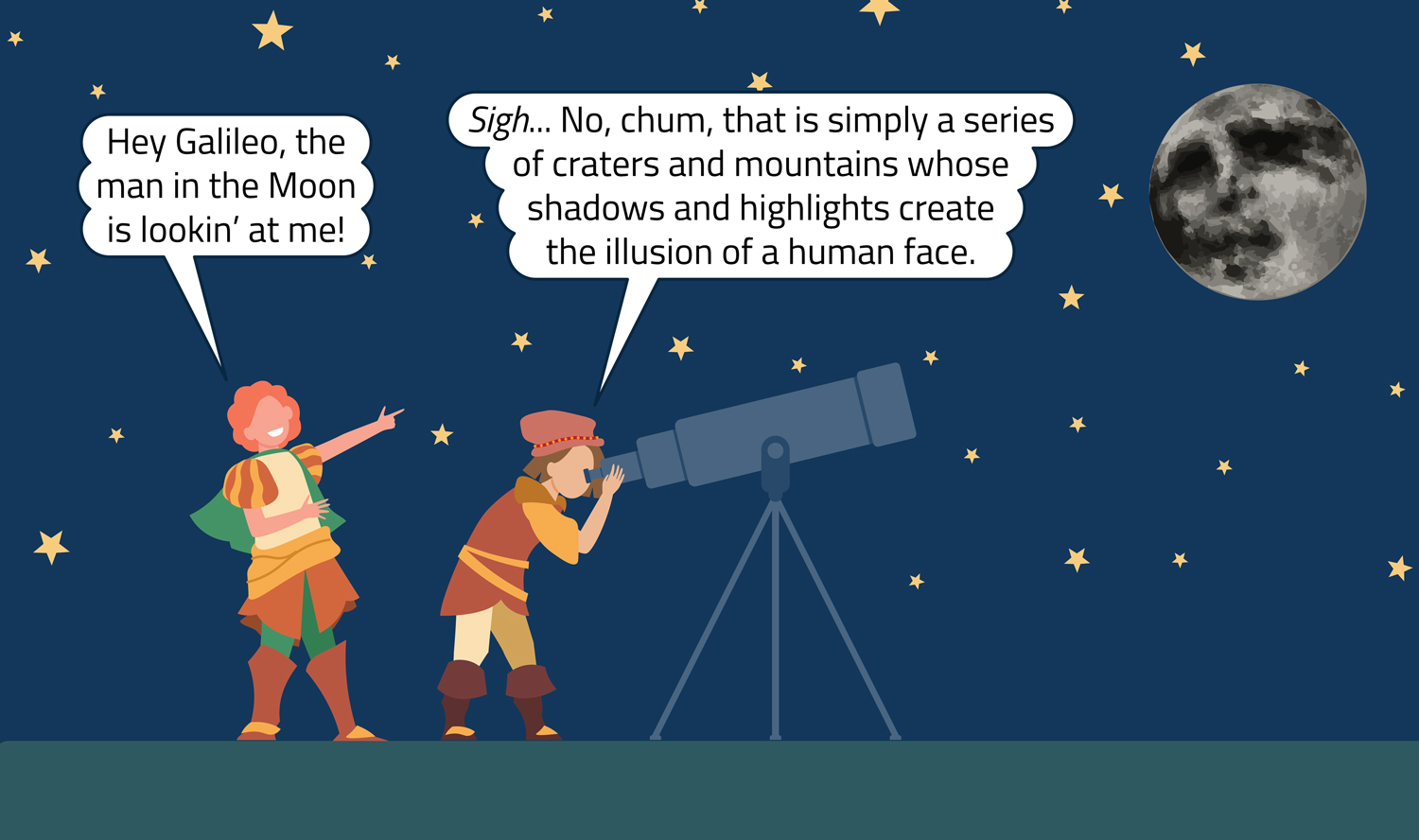An Ingenious Invention
Sirish Subash, 14, won the 3M Young Scientist Challenge after developing an invention we can all use.
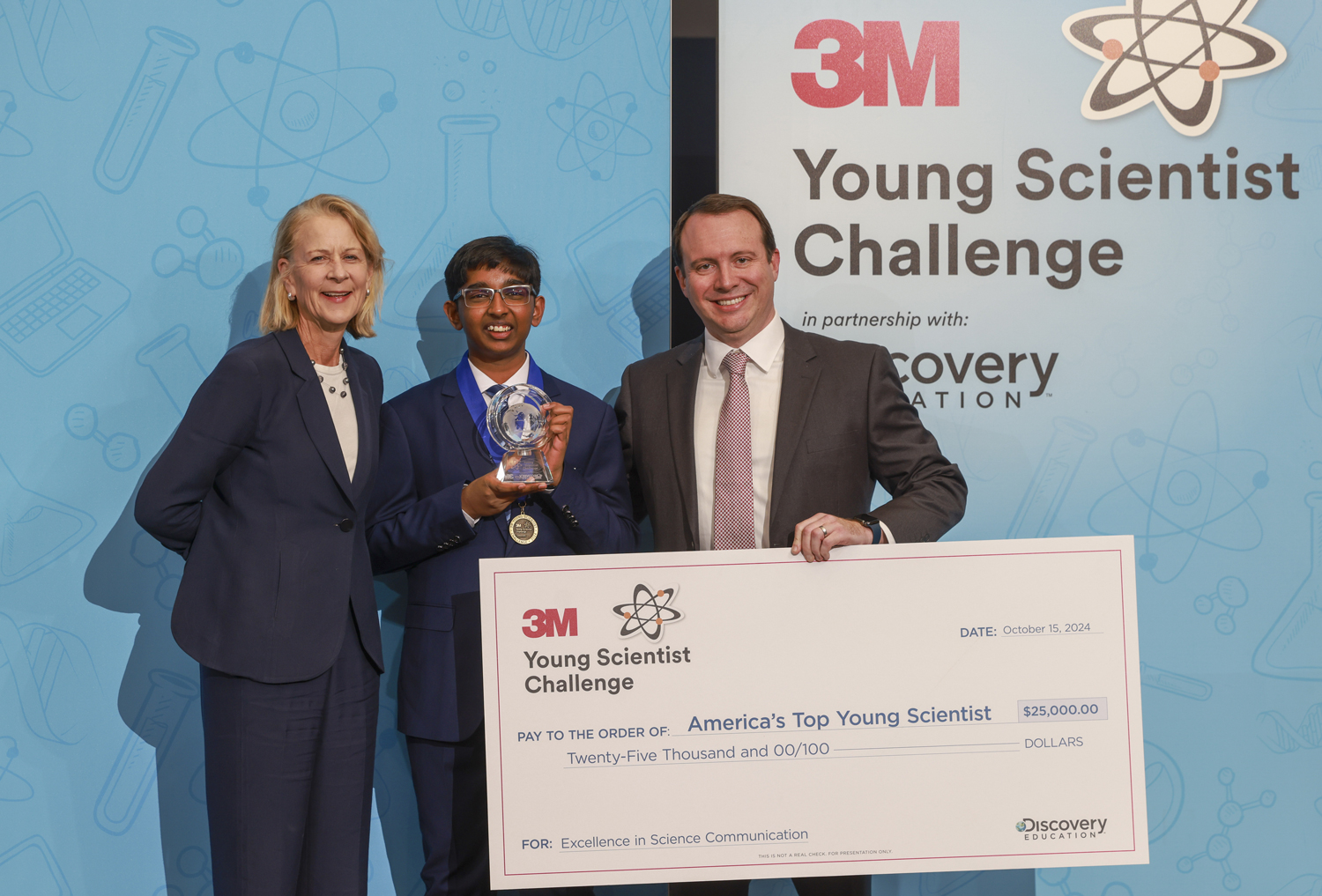
Photographer: Andy King 2024, courtesy of Discovery Education 2024
Sirish Subash (center) with Discovery Education CEO Brian Shaw and 3M Executive Vice President and Chief Public Affairs Officer Torie Clarke after winning the 3M Young Scientist Challenge.
When 14-year-old Sirish Subash’s mom kept insisting that he wash fruit before eating it to remove pesticides, he wondered if washing produce is really very effective. Hoping to find out, he ended up inventing a helpful device.
“My [invention] is called PestiSCAND,” Sirish told USA Today. “[It’s a] device that allows everybody to check for pesticide residues on their produce at home. The pesticide residue [is] a contaminant that’s commonly found on produce items.”
Sirish’s ingenuity paid off. The 9th grader from Georgia recently took home the top prize at the 2024 3M Young Scientist Challenge, an annual competition for middle school students.
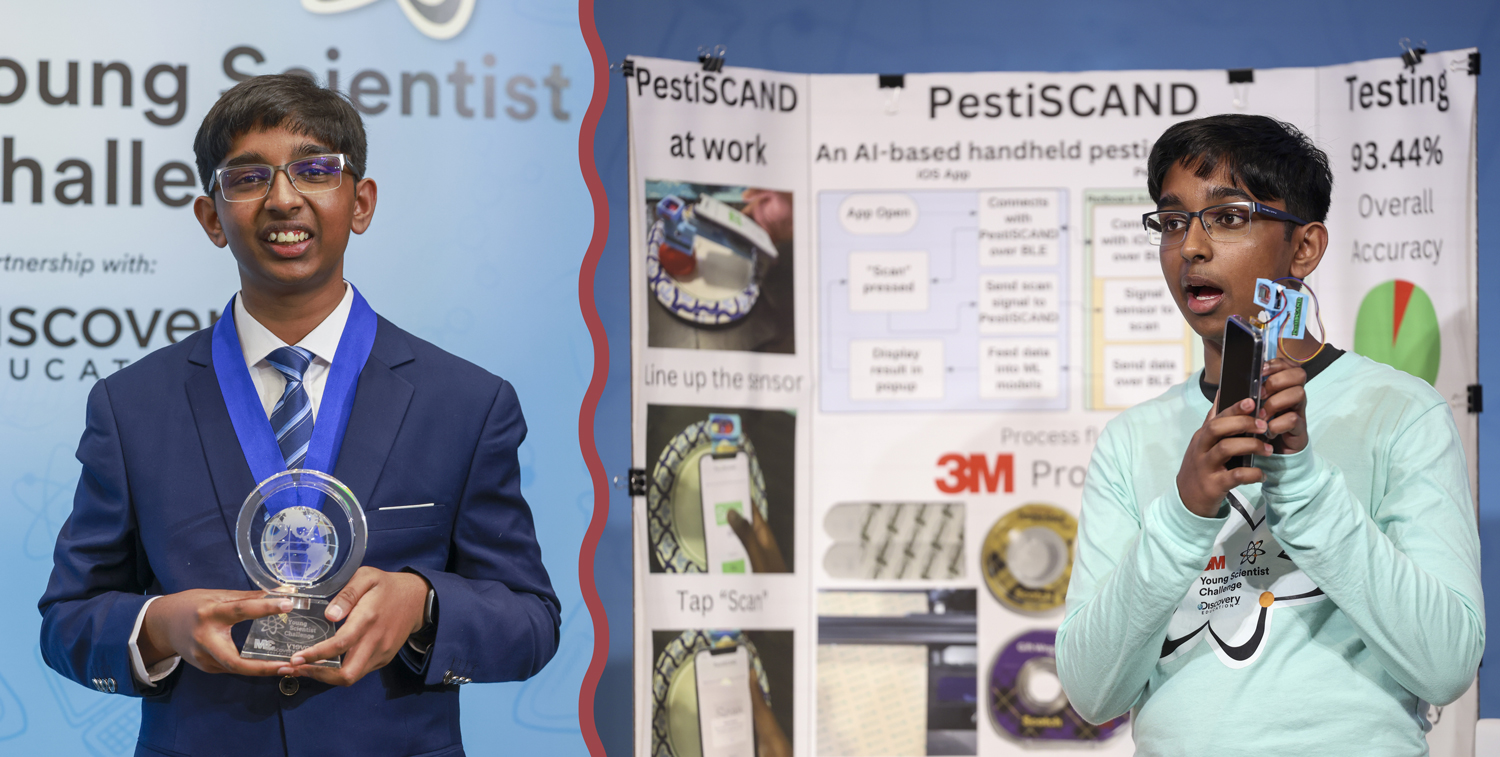
Photographer: Andy King 2024, courtesy of Discovery Education 2024
Sirish Subash poses with his award (left) and presents his invention, PestiSCAND.
According to the Food and Drug Administration (FDA), a large majority of produce in the United States contains pesticide residues. Ingesting pesticides is linked to a higher risk of Alzheimer’s disease, Parkinson’s disease, and certain forms of cancer.
“If we could detect [pesticides], we could avoid consuming them and reduce the risk of those health issues,” Sirish said.
PestiSCAND measures the light reflected off the surface of produce and then uses artificial intelligence (AI) to analyze the light waves and determine if pesticides are present. In his entry video, Sirish explained that certain wavelengths of light are reflected by pesticides. Sirish says PestiSCAND is more than 85 percent accurate.
The 3M Young Scientist Challenge is open to U.S. students in grades 5 to 8 (it’s okay if entrants go into 9th grade during the challenge). Ten contest finalists get to take part in a summer program, during which they improve their inventions with guidance from 3M scientists.
As the winner of the Challenge, Sirish will receive $25,000. He continues to make improvements to PestiSCAND and hopes that eventually, he’ll be able to sell it to the public for about $20.
